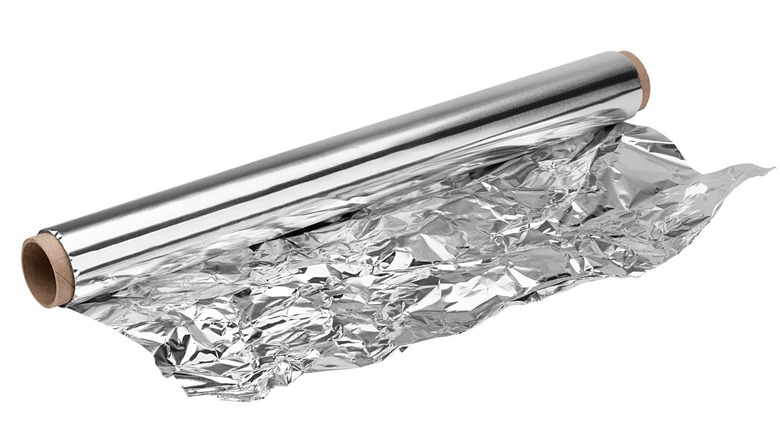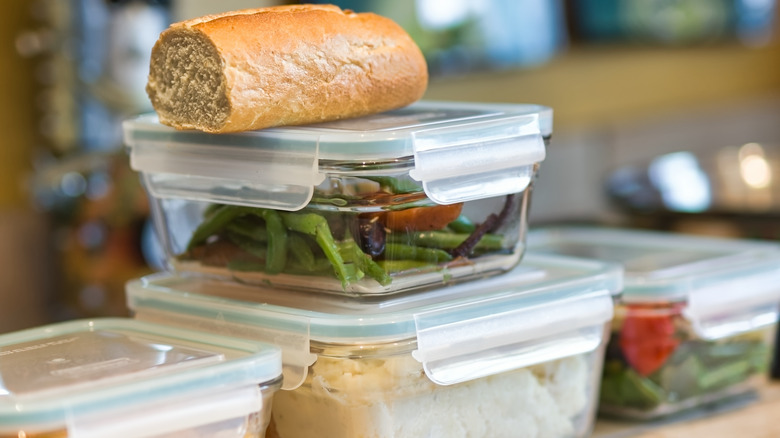Why You Should Think Twice About Using Aluminum Foil For Leftovers
It seems like a no-brainer: After dinner, you close up your leftovers in a sheet of aluminum foil and pop them in the fridge. But before you reach for the Reynolds wrap, you should probably think again about the safest ways to store food for later.
Foil traps heat and doesn't create an airtight seal in the way that other wraps and containers can (via Taste of Home). This means the leftovers in your fridge might be dangerous. Some of the bacteria that can cause foodborne illnesses, like salmonella and Staphylococcus aureus, can multiply rapidly when exposed to oxygen, per the University of Rhode Island. This is particularly pronounced when food sits too long in the temperature "danger zone" of 40–140 degrees Fahrenheit, a range some refrigerators can reach if owners aren't vigilant (via Real Simple).
While they typically are only good for a few days, there are some leftovers in your fridge that are more dangerous than others. Fortunately, there are plenty of better options for keeping them safe and delicious until it's time to enjoy them again.
Why you should use airtight glass containers instead of foil
Because foil can do more harm than good to your leftovers, you should consider other options when it's time to save tonight's dinner for tomorrow's lunch (per Reader's Digest). A tight seal with plastic cling wrap is one alternative for keeping pathogens out — and here's a shocking twist: If you throw out your aluminum foil after one use instead of reusing or recycling it, plastic wrap might even be more eco-friendly than foil. Granted, plastic wrap lasts about twice as long in the landfill, but making plastic wrap produces fewer emissions and uses less energy than producing new foil (via HuffPost).
But the best option — for both food safety and the planet — is to avoid disposable wraps and use more sustainable containers instead. When it comes to keeping your leftovers safe, reach for an airtight, shallow glass container so food cools quickly and has minimal contact with the environment (per Healthline).
And an added bonus: Instead of accidentally setting your microwave on fire with foil, you can reheat food in glass containers much more easily — as long as the internal temperature reaches a safe 165º (via Mayo Clinic). Just make sure you're not about to chow down on any foods that could become toxic when reheated!

